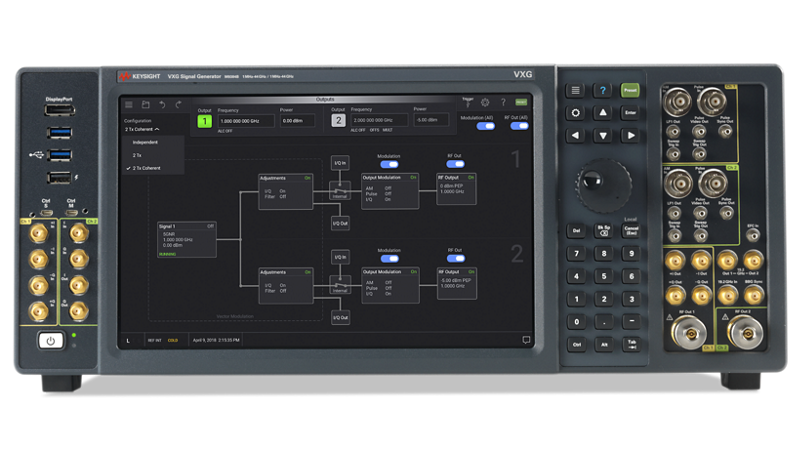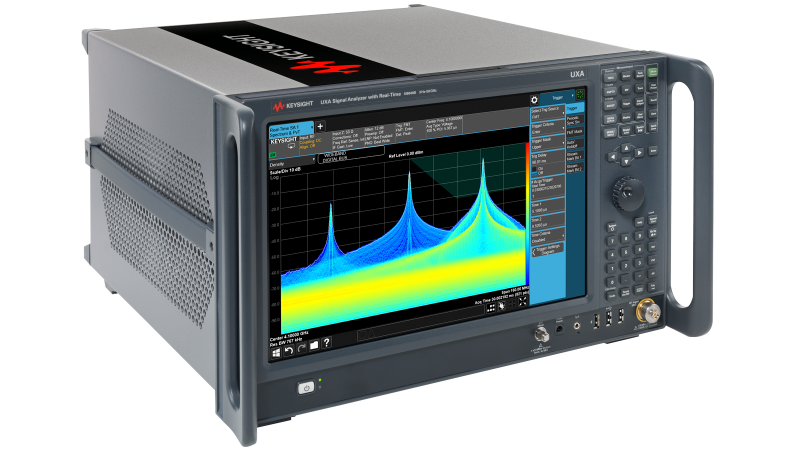What are you looking for?
RF Explained
Welcome to RF Explained, the indispensable video short series for engineers tackling the toughest RF development and deployment challenges. Keysight product marketing and industry experts serve as your guides through the emerging RF landscape.
EPISODE 1: Basic VXG Architecture
RF Explained Episode 1 – Join us for our very first episode where we learn about traditional signal generator architecture and how the custom ASICs developed by our Keysight Labs team in our M9484C VXG signal generator make testing 5G new radio base stations and user equipment so much simpler.
Transcript:
Hi, my name is Mark Sand, I am the product marketing manager for high-performance signal generators at Keysight. Welcome to the newest Keysight video series, “RF Explained”, the video series that takes a deep dive into the business, technology, and policy surrounding RF. In today’s episode, we will be diving into some traditional signal generator architecture as well as custom ASICs or Application Specific Integrated Circuits.
In a traditional vector signal generator architecture, because the digital to analog converters have limited bandwidth, an analog IQ modulator must be used to upconvert the baseband signal to the desired RF output frequency. Unfortunately, each component of the analog IQ modulator contributes errors like timing skew, DC offset, gain imbalance, phase noise, and quadrature skew. When this happens, these IQ modulation errors result in unwanted images within the multi-tone signal and significantly reduce the quality of the modulated signal as well as the dynamic range. As you can see, there are images introduced by the IQ modulator in between the desired tones that are very difficult to remove, and the dynamic range is reduced.
Now, let me show you how the custom ASICs developed by our Keysight labs team make testing 5G new radio base stations and user equipment so much simpler. Let’s start with our custom DAC ASIC. Diving deeper, let’s see what it looks like with the cover off. Here is a closer look. The IQ modulator function is now realized as a digital circuit. And that’s just one of the ASICs in our new vector signal generator.
In fact, we have two custom ASICs shown here. IQ data flows into the custom DSP ASIC where up to 8 customer defined baseband signals can be aggregated per RF output channel. The DSP ASIC provides flexible, real-time manipulation of baseband signals, where each baseband signal can be independently controlled, filtered, faded, and placed anywhere within a 2.5 GHz bandwidth. Our 4-channel vector signal generator can process up to 32 independent baseband signals. The high resolution and high sampling rate DAC ASIC enables direct generation of broadband RF signals placed anywhere between DC and 8.5 Gigahertz which covers the entire 5G FR1 band. And as you can see, this eliminates signal impairments caused by the analog IQ modulator seen earlier and significantly improves the dynamic range needed for wideband signal generation.
This is extremely useful for 5G base station and user equipment receiver testing where you need to emulate 5G signals and interferers. Thanks to these custom ASICS, you can simplify your complex 5G test setup by emulating up to 32 real-time signals in one instrument. And you can setup the frequency and output level for each signal in real-time without re-calibrating the test system.
Thank you all for watching, if you want to learn more, be sure to check out our Keysight VXG products at the following link and below the video and tune in next time!
Related Products

M9484C VXG Microwave Signal Generator
Generate 3GPP 5G NR standard-compliant signals with channel coding and multi-antenna port support

N9040B UXA Signal Analyzer
Ensure measurement integrity and repeatable results from 2 Hz to 50 GHz
Want help or have questions?






